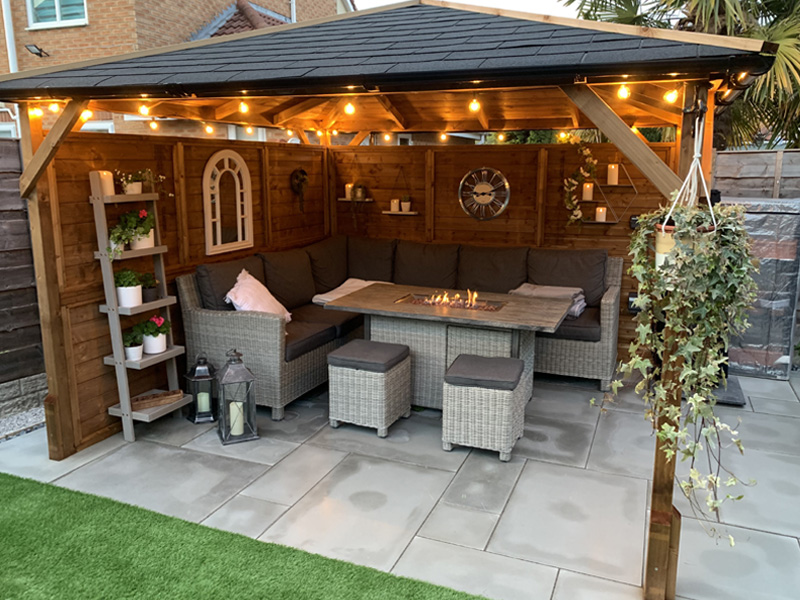Whether you’re envisioning a cozy spot for summer barbecues or a serene retreat for morning coffee, a rock-solid foundation is the secret to a gazebo that lasts. I’ve been tinkering with outdoor projects for years, and I’m sharing my top tips to help you build a gazebo foundation that’s sturdy, stylish, and built to withstand the elements. Let’s dive in!
Choose the Perfect Foundation Type
First things first: pick a foundation that suits your gazebo and your yard. Concrete slabs are my favorite for permanent, heavy-duty gazebos—they’re tough as nails but take some effort. Gravel bases are budget-friendly and great for smaller or portable setups, plus they drain like a dream. Pier-and-beam foundations work wonders on sloped yards, and paver bases add a chic, polished vibe. Think about your gazebo’s size, weight, and how permanent you want it to be, and check your local climate—windy spots need extra anchoring, and cold zones need frost protection.
Find the Sweet Spot for Your Site
The right location sets the stage for success. Scout your yard for a level area with decent drainage—nobody wants a gazebo sitting in a puddle! I steer clear of low spots where water collects. Use a shovel to clear grass, roots, and rocks, and call your utility company to check for buried lines before digging. A quick call to your local building office or HOA can also save you from permit headaches. Pro tip: mark out the gazebo’s footprint with an extra foot or two around it for a stable, spacious base.
Build a Foundation That Rocks
Laying the groundwork is where the magic happens. For a gravel base, I spread a geotextile fabric to block weeds, then layer 3/4-inch crushed stone, compacting each 2-inch layer with a tamper until I hit 4 inches total. For concrete, I pour a 4–6-inch slab with rebar for extra strength, making sure it’s dead-level with a spirit level. Paver bases need a compacted gravel bed topped with sand for snug paver placement. If you’re going pier-and-beam, dig holes below the frost line (check your local depth, usually 2–3 feet), pour concrete piers, and add anchor bolts. Whatever you choose, keep it level—your gazebo will thank you.
Lock It Down with Anchors
A gazebo without anchors is like a kite in a storm—ready to take off! For concrete slabs, I set anchor bolts in the wet concrete and bolt the gazebo frame down tight. On gravel or paver bases, I screw 18-inch spiral ground anchors into the soil at each corner and tie them to the gazebo with steel cables or straps. For pier-and-beam, I secure the frame to the piers with metal brackets. After anchoring, I give everything a good shake to ensure it’s solid. Trust me, you don’t want to learn this lesson during a windy night!
Keep Water at Bay
Water can wreak havoc on your foundation, so drainage is non-negotiable. I slope the ground away from the foundation at a gentle 1–2% grade to shunt water elsewhere. Gravel bases drain naturally, but I add a wooden or stone border to keep the gravel tidy. For concrete or paver setups, I’ve had great luck with perimeter drains in rainy areas. After a storm, I check for pooling and clear any debris clogging the flow— it’s a quick fix that prevents big problems.
Maintain Like a Pro
A little TLC keeps your foundation in tip-top shape. For gravel bases, I grab a rake every few months to smooth things out and add more gravel if it settles. Concrete slabs and pavers need a yearly check for cracks—small ones get a quick fix with concrete sealant. I inspect anchors for rust or looseness, tightening or replacing them as needed. If your gazebo is wood, slap on a weatherproof sealant every year to shield it from moisture creeping up from the foundation. A few hours of maintenance can save you from costly repairs.
My Biggest Lesson Learned
Here’s a nugget from my own backyard blunders: don’t rush the prep work. I once skipped proper compaction https://www.siteprep.com/articles/everything-about-gazebo-foundation/ on a gravel base, and my gazebo started leaning like a tipsy uncle within months. Another time, I underestimated drainage, and water turned my foundation into a mess. Take it slow, double-check your levels, and prioritize drainage—your future self will thank you.
With these tips, you’re ready to build a gazebo foundation that’s as solid as your backyard dreams. Get out there, grab your tools, and create an outdoor oasis that’ll be the envy of the neighborhood!




